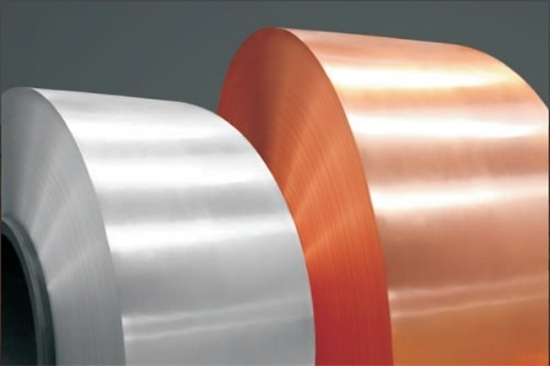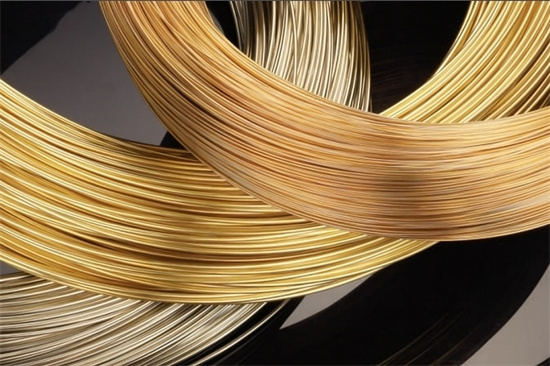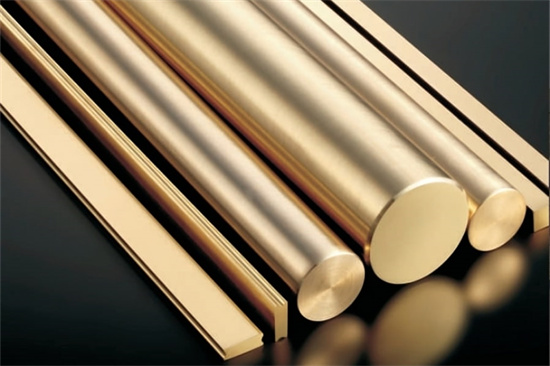


CuSn4: A Deep Dive into This Tough, Corrosion-Resistant Alloy
Low MOQ
Provide low minimum order quantity to meet different needs.
OEM & ODM
Provide customized products and design services to meet unique customer needs.
Adequate Stock
Ensure fast order processing and provide reliable and efficient service.
Customer Satisfaction
Provide high quality products with customer satisfaction at the core.
share this article
Table of Contents
In the world of metals and alloys, CuSn4 is a name that stands out. Whether you’re designing high-performance marine hardware, precision bearings, or essential electrical components, CuSn4 has become a go-to option for many engineers and manufacturers. This phosphor bronze alloy, made from copper (Cu) and tin (Sn), offers a unique balance of strength, corrosion resistance, and ductility that makes it suitable for a wide array of applications.
If you’ve ever wondered why CuSn4 is so popular, or if you’re trying to decide if it’s the right material for your project, you’ve come to the right place. In this comprehensive guide, we’re going to explore everything about CuSn4—from its composition and properties to its applications and pricing. We’ll also compare it to other common copper alloys and dive into its advantages and limitations.
So, grab a cup of coffee, and let’s dive deep into the world of CuSn4—a material that’s as versatile as it is reliable.
Overview
CuSn4 is a phosphor bronze alloy that contains approximately 4% tin. This slight addition of tin to the copper base enhances the material’s strength, hardness, and corrosion resistance, especially in marine and industrial environments. The presence of phosphorus in trace amounts further improves machinability and helps reduce friction, making CuSn4 an excellent choice for sliding components and bearings.
Key Characteristics
- Moderate Strength: Provides a great balance between strength and ductility.
- Corrosion Resistance: Especially effective in marine and industrial atmospheres.
- Good Wear Resistance: Suitable for sliding applications such as bearings and gears.
- Machinability: The addition of phosphorus improves its ease of machining.
- Electrical Conductivity: While not as conductive as pure copper, CuSn4 still serves well in electrical components.
Composition and Properties
Understanding the composition and mechanical properties of CuSn4 is crucial for determining where and how it can be used. Below, we’ll break down the chemical composition and examine its mechanical and physical properties in detail.
Composition
The specific composition of CuSn4 gives it a balance of strength, ductility, and corrosion resistance. The addition of tin and phosphorus makes this alloy a reliable option for high-stress environments.
| Element | Percentage (%) |
|---|---|
| Copper (Cu) | 95.5 – 96.0 |
| Tin (Sn) | 3.5 – 4.5 |
| Phosphorus (P) | 0.01 – 0.35 |
- Copper (Cu): The base material, providing ductility and thermal conductivity.
- Tin (Sn): Enhances corrosion resistance, strength, and wear resistance.
- Phosphorus (P): Improves machinability and reduces friction.
Mechanical and Physical Properties
Let’s take a closer look at the mechanical and physical properties that make CuSn4 a versatile and high-performance alloy.
| Property | Typical Value |
|---|---|
| Tensile Strength | 400 – 500 MPa |
| Yield Strength | 200 – 350 MPa |
| Elongation | 10 – 25% |
| Hardness | 80 – 120 HB |
| Density | 8.8 g/cm³ |
| Thermal Conductivity | 55 – 60 W/mK |
| Electrical Conductivity | 12 – 18% IACS |
| Fatigue Resistance | High |
| Corrosion Resistance | Excellent |
Why These Properties Matter
- Tensile Strength: Determines how much force CuSn4 can withstand before breaking, making it ideal for high-load components.
- Corrosion Resistance: Essential for applications in marine and industrial environments where exposure to corrosive elements is common.
- Wear Resistance: With a low friction coefficient, CuSn4 is often used for bearings and gears, enabling smooth, long-lasting performance.
Applications: Where and How It’s Used
Thanks to its unique combination of properties, CuSn4 is used in a wide range of industries and applications. Let’s explore its most common uses across different sectors.
Common Applications
| Industry | Applications |
|---|---|
| Marine | Bearings, bushings, propeller shafts, fasteners |
| Electrical | Connectors, terminals, switch components |
| Automotive | Valve guides, gears, springs |
| Aerospace | Precision components, fasteners |
| Industrial Engineering | Gears, bearing cages, wear plates |
| Musical Instruments | Strings, wind instruments |
Why CuSn4 Fits These Applications
- Marine: CuSn4’s excellent corrosion resistance makes it ideal for marine hardware like bearings and bushings, which are exposed to saltwater and mechanical stress.
- Electrical: With moderate electrical conductivity and high mechanical strength, CuSn4 is perfect for connectors and terminals that need to withstand both electrical current and physical stress.
- Automotive: In automotive applications, CuSn4 is used in valve guides, gears, and springs due to its ability to handle repetitive stress and wear.
- Aerospace: CuSn4 is used in aerospace for precision components that require a combination of strength and corrosion resistance.
- Musical Instruments: The alloy’s acoustic properties make it ideal for musical strings and wind instruments, where resonance and durability are key.
Specifications, Sizes, and Grades
Choosing the right specifications and grades of CuSn4 is essential for ensuring optimal performance in your application. Let’s take a look at the various forms, sizes, and grades available for this alloy.
Specifications and Sizes
| Specification | Details |
|---|---|
| Form | Sheets, strips, rods, wires, bars |
| Thickness Range (Sheets) | 0.2 mm to 10 mm |
| Diameter Range (Rods) | 1 mm to 150 mm |
| Temper | Annealed, cold-worked, hard |
| Standards | ASTM B103, DIN 17662, EN 1652 |
Grades
| Grade | Key Characteristics |
|---|---|
| CuSn4-Soft (Annealed) | High ductility, suitable for deep drawing and forming |
| CuSn4-Hard (Cold-Worked) | Increased strength, used in wear-resistant applications |
| CuSn4-Extra Hard | Maximum strength, ideal for high-load, wear-intensive applications |
Why Specifications Matter
The form and grade you choose will significantly impact the performance and cost-efficiency of the alloy in your project. For example, annealed CuSn4 offers high ductility, making it ideal for deep drawing or forming, while harder grades are better suited for high-wear environments.
Suppliers and Pricing
When sourcing CuSn4, it’s important to choose a reliable supplier and understand the factors that influence pricing. Below, we’ve compiled a list of prominent suppliers and estimated pricing to give you a better sense of the market.
Suppliers and Pricing Details
| Supplier | Location | Price Range (per kg) | Delivery Time |
|---|---|---|---|
| PhosphorBronze Ltd. | USA | $12 – $20 | 2-3 weeks |
| EuroAlloys Ltd. | Europe | €10 – €18 | 1-2 weeks |
| AsiaMet Corp. | China | $9 – $19 | 3-4 weeks |
| GlobalMetals Ltd. | India | $8 – $17 | 2-4 weeks |
| MarineAlloys UK | UK | £10 – £18 | 1-2 weeks |
Factors Affecting CuSn4 Pricing
- Form: Sheets, rods, wires, and strips have different price points based on processing and form factor.
- Grade: Harder grades or those that undergo additional processing, such as cold-working, typically cost more.
- Quantity: Bulk purchases often result in lower per-unit prices.
- Market Demand: As with any metal, fluctuations in supply and demand can affect the price.
Advantages and Limitations
Like any material, CuSn4 has its own set of advantages and limitations. Let’s break down the pros and cons to help you decide if it’s the right material for your project.
Advantages and Limitations
| Advantages | Limitations |
|---|---|
| Good balance of strength and workability | More expensive than brass or lower-grade bronzes |
| Excellent corrosion resistance | Lower electrical conductivity than pure copper |
| Good wear resistance | Can require careful heat treatment |
| High fatigue resistance | May need surface treatments for aesthetics |
| Machinable | Less thermal conductivity compared to pure copper |
Is CuSn4 Right for Your Project?
If you need an alloy that offers excellent corrosion resistance, good wear resistance, and moderate electrical conductivity, CuSn4 is likely the right choice. However, if cost or electrical performance is a primary concern, you may want to consider alternatives like brass or pure copper.
CuSn4 vs. Other Copper Alloys: A Comprehensive Comparison
When selecting the right alloy for your project, it’s important to compare CuSn4 with other similar copper alloys. Below, we’ll compare CuSn4 with CuSn6, brass (CuZn37), and copper-nickel (CuNi10).
CuSn4 vs. CuSn6 vs. Brass vs. Copper-Nickel
| Property | CuSn4 | CuSn6 | Brass (CuZn37) | Copper-Nickel (CuNi10) |
|---|---|---|---|---|
| Tensile Strength | 400 – 500 MPa | 450 – 550 MPa | 250 – 450 MPa | 300 – 550 MPa |
| Yield Strength | 200 – 350 MPa | 250 – 400 MPa | 100 – 250 MPa | 200 – 350 MPa |
| Corrosion Resistance | Very High | Very High | Moderate | Excellent |
| Electrical Conductivity | 12 – 18% IACS | 12 – 15% IACS | 28% IACS | 5 – 10% IACS |
| Wear Resistance | High | Very High | Moderate | High |
| Cost | Moderate | High | Low | High |
| Applications | Marine, electrical, automotive | Marine, electrical, automotive | Plumbing, decorative items | Marine, heat exchangers, piping |
Key Takeaways from the Comparison
- CuSn4 offers a good balance of strength, wear resistance, and corrosion resistance, making it a versatile choice.
- CuSn6 has slightly better strength and wear resistance but is often more expensive.
- Brass offers better electrical conductivity and is typically cheaper but lacks the corrosion resistance and wear resistance of CuSn4.
- Copper-Nickel excels in corrosion resistance, particularly in marine environments, but comes at a higher cost.
Frequently Asked Questions (FAQ)
We’ve gathered some of the most common questions about CuSn4 to help you better understand this versatile alloy.
| Question | Answer |
|---|---|
| What is it used for? | It is commonly used in marine hardware, bearings, bushings, electrical connectors, and automotive parts. |
| How much does it cost? | It typically costs between $8 and $20 per kg, depending on the supplier, grade, and form. |
| Is it corrosion resistant? | Yes, it offers excellent corrosion resistance, particularly in marine and industrial environments. |
| Can it be used in electrical applications? | Yes, it has moderate electrical conductivity and is suitable for connectors, terminals, and switch components. |
| What’s the difference between CuSn4 and CuSn6? | It contains more tin (6% vs. 4%) than CuSn4, which provides better strength and wear resistance, but at a higher cost. |
| Is it good for machining? | Yes, it is known for its good machinability, making it easier to work with for precision parts. |
Conclusion
It is a highly versatile and reliable phosphor bronze alloy that offers a unique combination of properties—strength, corrosion resistance, and wear resistance—making it a popular choice across various industries. From marine hardware to automotive components and electrical connectors, it continues to prove its value in demanding environments.
While it may not be the cheapest option, its long-term durability and reliability make it a worthwhile investment for applications where performance and longevity matter most. Whether you need an alloy for bearings, gears, or electrical components, it offers a well-rounded solution that can stand up to the toughest conditions.
In short, it is a material you can rely on when performance under stress, corrosion resistance, and wear resistance are critical.
Maybe you want to know more about our products, please contact us
Get Latest Price
About Met3DP
Product Category
HOT SALE
CONTACT US
Any questions? Send us message now! We’ll serve your request with a whole team after receiving your message.

Metal Powders for 3D Printing and Additive Manufacturing
COMPANY
PRODUCT
cONTACT INFO
- Qingdao City, Shandong, China
- [email protected]
- [email protected]
- +86 19116340731








